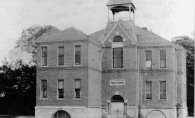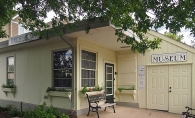The American Civil War broke out 150 years ago this year. More than 600,000 soldiers and civilians died in the bloodiest war our nation has ever fought. Although far on the frontier at the time, Lake Minnetonka was not immune to its effects.
Minnesota offered the first regiment of soldiers to Lincoln to fight in the Civil War, and the Lake Minnetonka area claims the title of the first civilian to be commissioned during the war. The Halstead brothers, George and Frank, settled on the shores of Lake Minnetonka in the 1850s; Halstead’s Bay is named for them. The day after hostilities broke out, George enlisted in the Union Navy. Frank was traveling out east in New Jersey at the time and he soon signed on the dotted line as well.
The two of them served on the USS Minnesota, the flagship of the North Atlantic Blockading Squadron, that engaged the southern navy in Virginia and North Carolina. The ship engaged in several naval battles—one against ironclad Confederate ships. The recoil of Minnesota’s side cannons ran her aground near Newport News, Vir. Tugboats and a steamer lugged the USS Minnesota from the mud. She later survived a Confederate torpedo attack, one of the first ever used in naval warfare.
During the Civil War, the U.S. Navy also commissioned the construction of the USS Minnetonka. The three-masted steam frigate was completed in 1867, two years after the end of the war, and never saw any military action. It was renamed the USS California and served briefly in the Pacific post-war. Since the hull was made of seasoned wood, the boat rotted and was dismantled in 1875.
Frank Halstead, who achieved the rank of captain in the Navy, moved back to the western bay of Lake Minnetonka near Minnetrista, built a small house and named it his “Hermitage.” Due to his naval experience, the “Hermit of Lake Minnetonka” helped dredge out the Narrows and made the lake more usable to large boats. The sole steamer on the lake, the May Queen, provided poor service on the lake, so Frank mortgaged his house to build his own steamer, the Mary, to give some competition.
Building the boat led him to financial ruin, so he rowed to the middle of the lake, tied a bag of rocks around his neck and threw himself overboard. His brother George, a major in the Navy, moved out to the Hermitage and took over the estate. The Hermitage had become a popular tourist stop, where visitors could spend 25 cents to see Civil War relics and hear battle tales. In 1901, a fire quickly burned the Hermitage to the ground with George inside.









